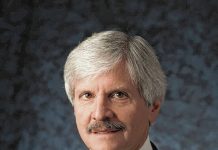INDIANAPOLIS – In the waning days of the presidential campaign, when he thought he was likely to lose, President-elect Donald Trump routinely complained that the system was “rigged.”
He was right — but it’s rigged to benefit him and the Americans he represents.
Angry Hillary Clinton supporters and other activists have focused their ire on the Electoral College. They point to the fact that Clinton won more than 2 million more popular votes than Trump did and they say that the Electoral College perverts the will of the people.
They want to see it abolished — or reformed so that the winner of the popular vote always wins the election.
There’s another way to solve this problem they ought to consider, because the problem is larger than the presidency.
The Electoral College’s total of 535 votes reflects the membership of the two branches of Congress, the 100 U.S. senators and the 435 members of the U.S. House of Representatives.
Originally, the different sizes of the memberships of the Senate and the House were supposed to reflect the two chambers’ different purposes. The fact that every state, however small or large, had the same number of senators — two — was supposed to reflect the fact that each state had the same standing within the federal government.
The House, on the other hand, was supposed to reflect the voice of the people. That’s why it was called “the people’s house.” And its membership was supposed to grow as the population of the United States grew.
That’s the way it worked until the 1920s.
Then, amid rising concerns in rural states about waves of immigration from Europe filling cities, Congress decided to change its system of apportionment. It capped the membership of the House of Representatives at 435.
And, except for temporary expansions when Alaska and Hawaii became states, that’s the way it’s stayed since 1929.
The effect has been to give voters in less-populated and rural states an increasingly disproportionate voice not just in terms of who occupies the Oval Office or who sits in the U.S. Senate, but who rules the House of Representatives.
The people’s house.
In 1929, the year the cap was installed, America had a population of slightly more than 90 million people. Most Americans then lived in the country or in small towns.
Now, we are a nation of slightly more than 325 million and roughly 63 percent of us live in urban areas.
That change isn’t reflected in our system of selecting the president, U.S. senators or members of the House of Representatives.
The fact that our government isn’t set up to represent the will of the majority any longer has had unfortunate effects.
The first is that it has undermined confidence in the idea that all Americans have the same voice in their country’s affairs. The brutal fact is that a Wyoming resident’s vote is worth more — much more — proportionately than that of a resident of California, Texas, New York or Florida.
This leads to the second problem.
Because small states and a minority of Americans have more weight within the system than they should, time and again we see concerns that matter to a majority of Americans — gun violence, affordable health care, income inequality — shoved aside or ignored.
We are supposed to be a nation in which the will of the majority prevails while the rights of the minority are protected.
Now, though, we live in a country in which we live, in the words of a friend of mine, under the tyranny of the minority while the will of the majority is ignored.
The solution to this is go back to the old system and have the membership of the House of Representatives keep pace with population growth — to make it the people’s house once more. The Senate could remain as the bulwark of small states’ interests and prerogatives.
And have the Electoral College continue to reflect the membership of the two chambers of Congress.
Some will argue that increasing the House’s membership would make things more unwieldy and add to the federal government’s dysfunction.
Maybe, but it’s also possible that a reconstituted House would see its mission as implementing the people’s will, rather than thwarting it.
That would be a welcome change.
John Krull is director of Franklin College’s Pulliam School of Journalism, host of “No Limits” WFYI 90.1 Indianapolis and publisher of TheStatehouseFile.com, a news website powered by Franklin College journalism students.



